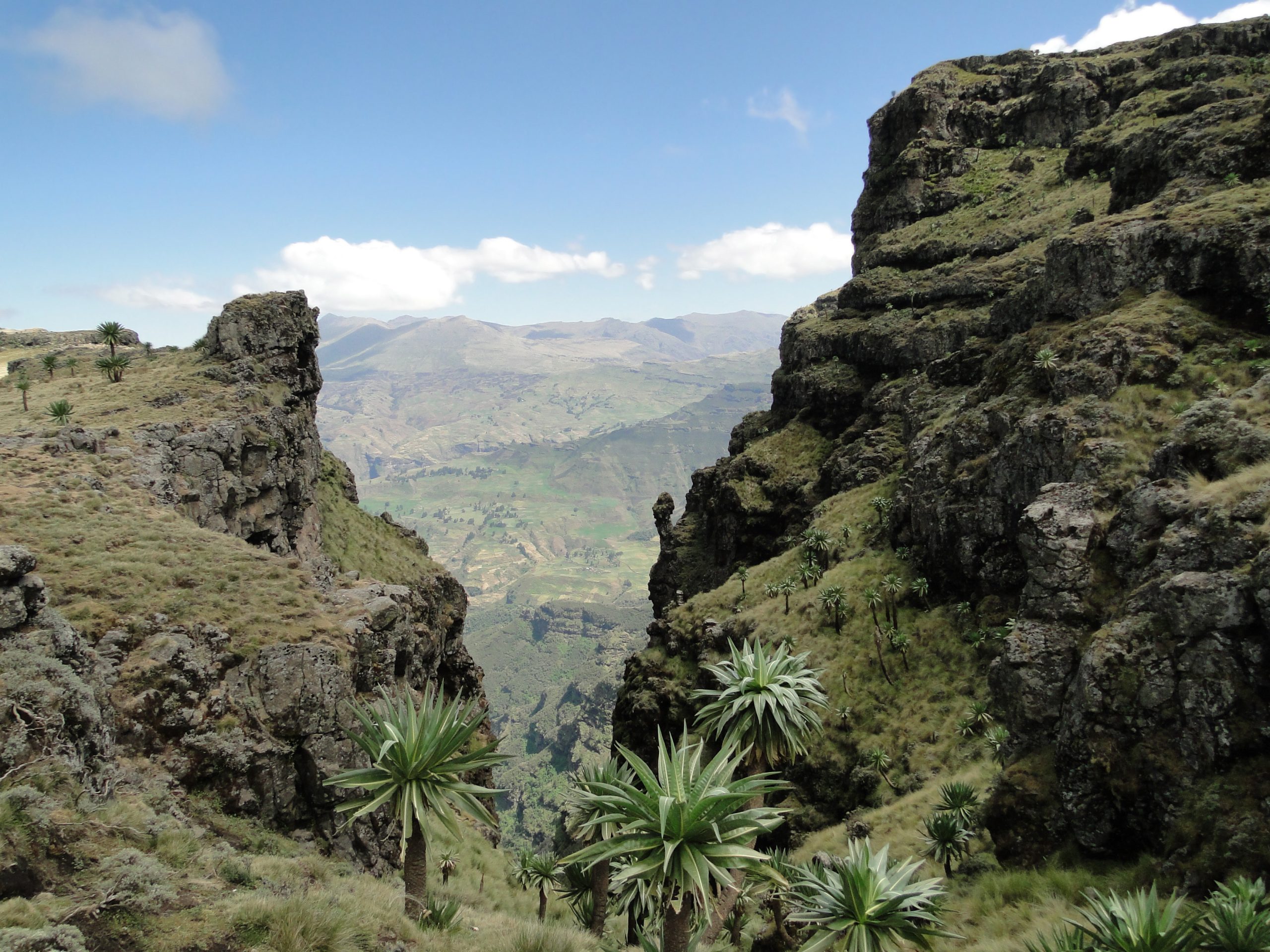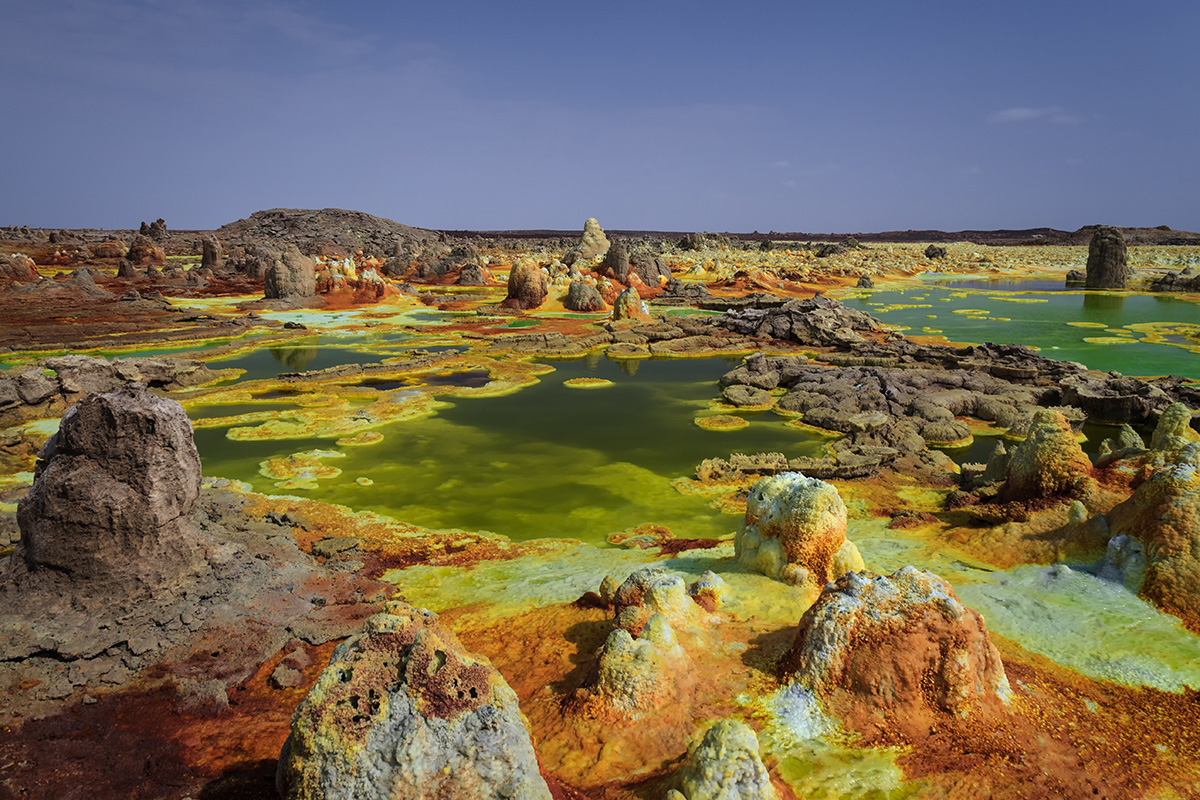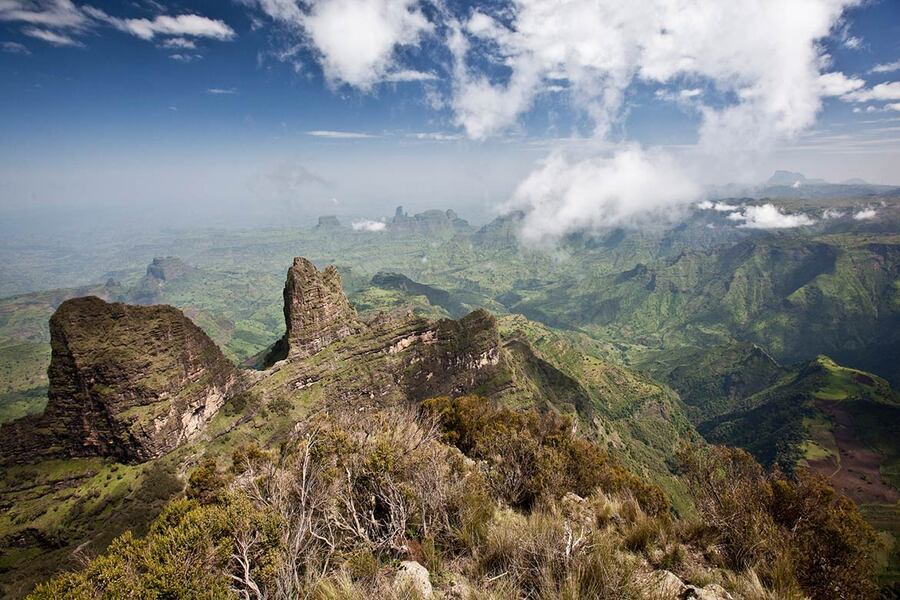- Home
- SIMIEN MOUNTAINS
SIMIEN MOUNTAINS
The simien mountain massif is one of the major highlands of Africa, rising to the highest point in Ethiopia, Ras Dejen (4543m), which is the fourth highest peak in the continent. Although in Africa and not too far from the equator, snow and ice appear on the highest points and night temperatures often fall below zero. The national park has three general botanical regions. The lower slopes have been cultivated and grazed, while the alpine regions (up to 3600m) were forested, although much has now disappeared. The higher lands are mountain grasslands with fescue grasses as well as heathers, splendid Red Hot Pokers and Giant Lobelia. The park was created primarily to protect the Red Fox, a type of wild goat, and over 1000 are said to live in the park. Also in the park are families of the Gelada Baboon and the rare Simien fox. The Simien fox, although named after the mountains, is rarely seen by the visitor. Over 50 species of birds have been reported in the Simien Mountains. The Simien Mountain massif is a broad plateau, cut off to the north and west by an enormous single crag over 60 kilometers long. To the south, the tableland slopes gently down to 2,200 meters, divided by gorges 1,000 meters deep which can take more than two days to cross. Insufficient geological time has elapsed to smooth the contours of the crags and buttresses of hardened basalt. Within this spectacular splendor live the Walia (Abyssinian) ibex, Simien red fox and Gelada baboon – all endemic to Ethiopia – as well as the Hamadryad baboon, klipspringer and bushbuck. Birds such as the lammergeyer, augur buzzard, Evreux’s eagle, kestrel and falcon also soar above this mountain retreat. Twenty kilometers north-east of Gondar, the SIMIEN mountains N.P covers 225 square kilometers of highland area at an average elevation of 3,300 meters. Ras Dashen, at 4,620 meters the highest peak in Ethiopia, stands adjacent to the park. The Simien escarpments, which are often compared to the Grand Canyon in the United States of America, have been adopted by UNESCO as a World Heritage Site.






